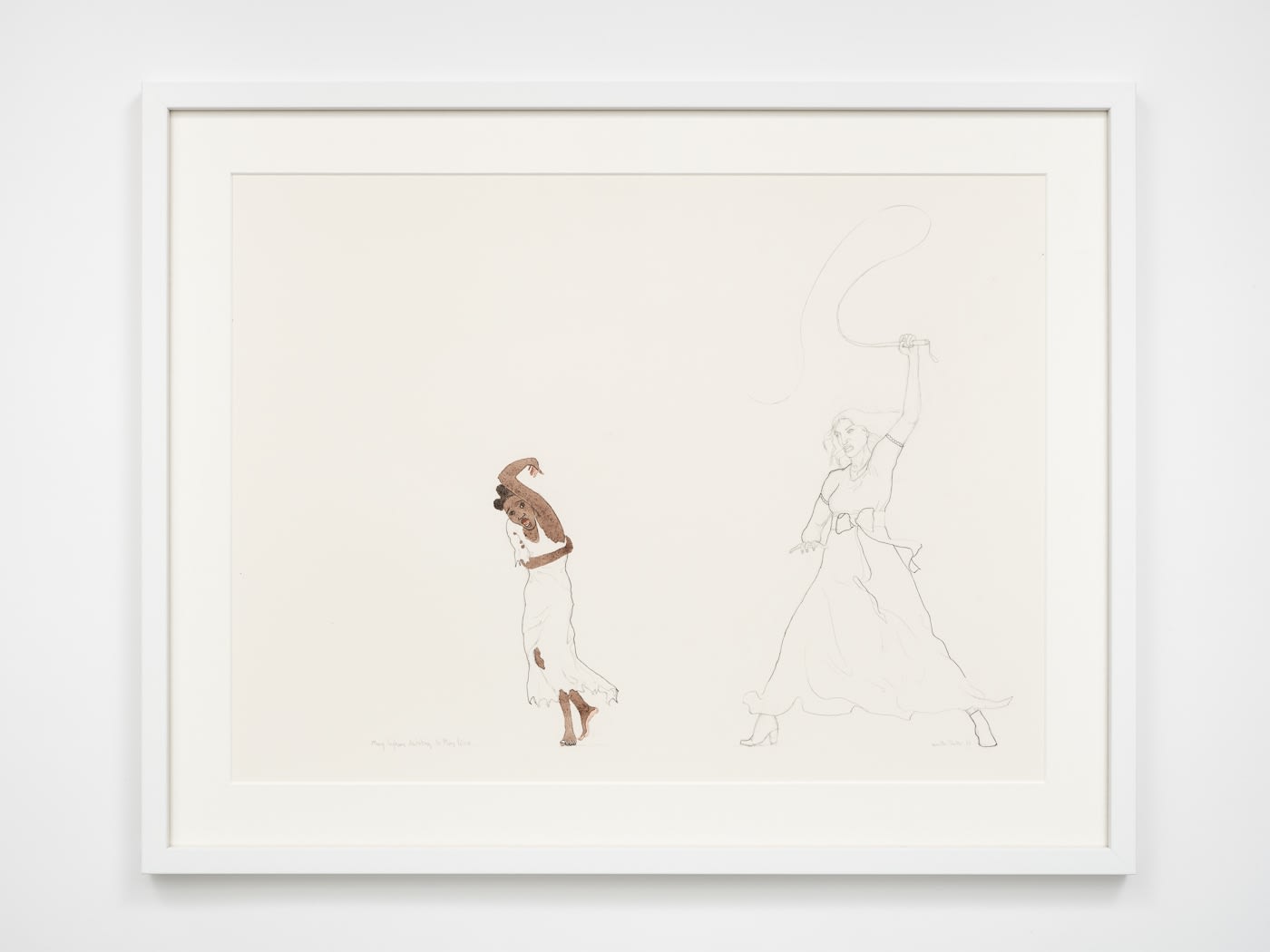
Kimathi Donkor
15 1/2 x 19 1/2 in
“Oh the horrors of slavery!--How the thought of it pains my heart! But the truth ought to be told of it; and what my eyes have seen I think it is my duty to relate; for few people in England know what slavery is. I have been a slave--I have felt what a slave feels, and I know what a slave knows; and I would have all the good people in England to know it too, that they may break our chains, and set us free.” from ‘The History of Mary Prince, A West Indian Slave, Related by Herself’ (1834)
Mary Prince was born in the late 1780s to enslaved parents in Bermuda. Through her lifetime, five different slave-owners claimed her as their property. Her last slave-owners moved to London in 1828 where Prince was able to escape, and was taken in by an anti-abolitionist. There, she related her story to another lodger, Susanna Strickland who was an aspiring writer in 1831 ‘The History of Mary Prince, A West Indian Slave, Related by Herself’ was published which described the horrific treatment Mary had suffered as a slave as well as detailing the system of slavery. The book was the first published account of enslavement by a Black woman and was hugely important in the campaign to abolish the slave system, being re-printed twice more during its year of publication alone. Slavery was abolished in the British colonies on 1 August 1834.
Kimathi Donkor’s diptych ‘The History of Mary Prince’ shows Mary Prince at two different stages of her life. The first work depicts her suffering brutal treatment when she was owned by Captain John Ingham and his wife Mary, who is depicted by Donkor. The Inghams were barbarously cruel who flogged and routinely subjected slaves to torture. They would eventually auction Prince to her next slave-owner. The second work in the diptych shows Prince recounting her story to Susanna Strickland. Prince is shown finally as a free person, confident in her own agency, and telling her tale for a book that would greatly help the Abolitionist cause. Mary Prince is seen as what she became; a storyteller, an abolitionist and a rebel.
